

How To View and Create Hidden Files in Linux
source link: https://www.geeksforgeeks.org/how-to-view-and-create-hidden-files-in-linux/
Go to the source link to view the article. You can view the picture content, updated content and better typesetting reading experience. If the link is broken, please click the button below to view the snapshot at that time.

How To View and Create Hidden Files in Linux
In the Linux framework, there are a ton of hidden records that incorporate for the most part the client setup document and the application documents. You can likewise hide your documents in your framework on the off chance that you are imparting them to another individual or because of any explanation. In any case, recall that hiding the documents doesn’t safeguard your security, as anybody can see hidden records. Hiding documents simply makes the record imperceptible for the customary client investigating or posting the documents. Likewise, it keeps the index from being jumbled.
Creating Hidden Files in Linux
Creating Hidden Files can be done in two best ways in Linux:
- Method 1: Command Line
- Method 2: GUI (Graphical User Interface)
To hide a record in Linux, you basically have to add a spot (.) toward the start of the filename.
Method 1: Command-line
Hide the file by moving it under a new filename. The period (.) at the beginning of the new filename indicates that it’s hidden
$ mv Firefox-Temp-Binary .FF-test
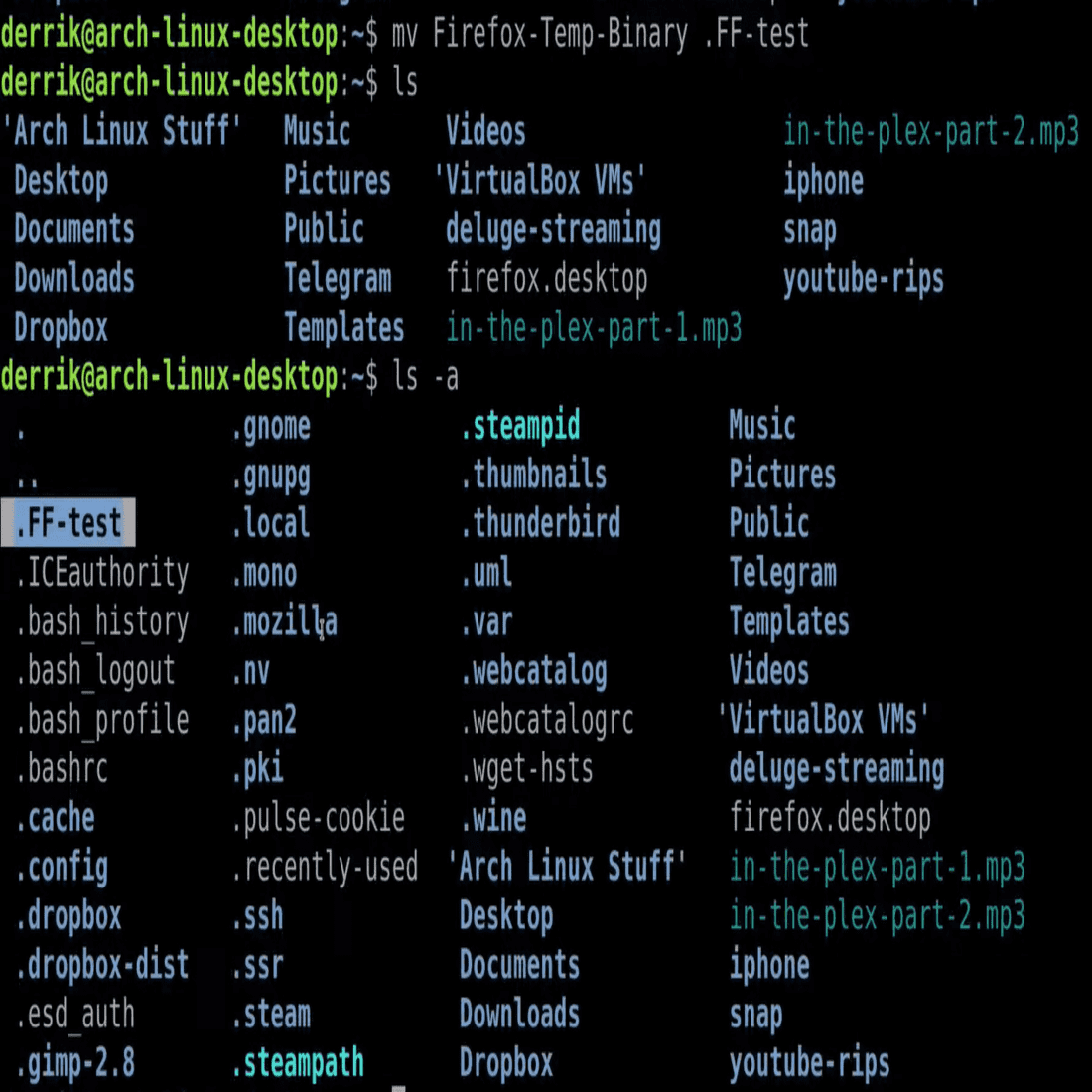
After renaming by adding . (dot) with $ls command file cannot be viewed as it is hidden.
Method 2: GUI (Graphical User Interface)
Step 1: Right-click on the file and select the Rename option.
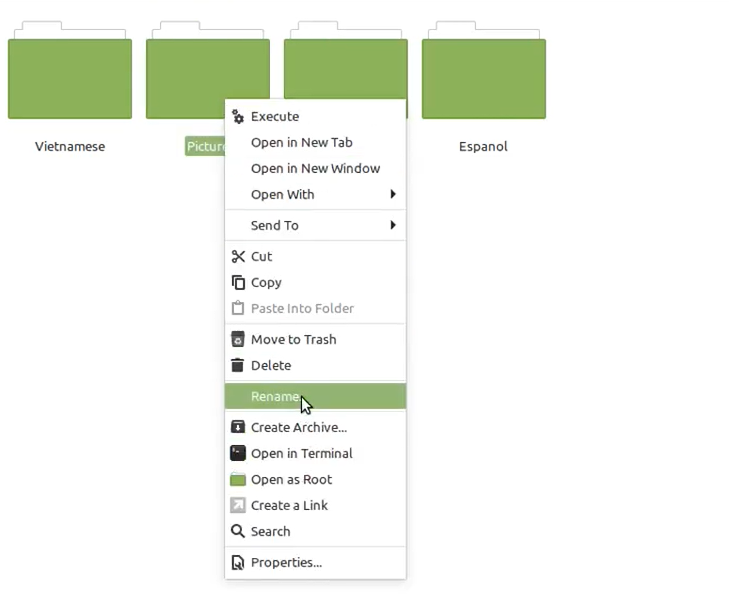
Step 2: Make the file hidden by placing a .(dot) at the beginning of the filename.
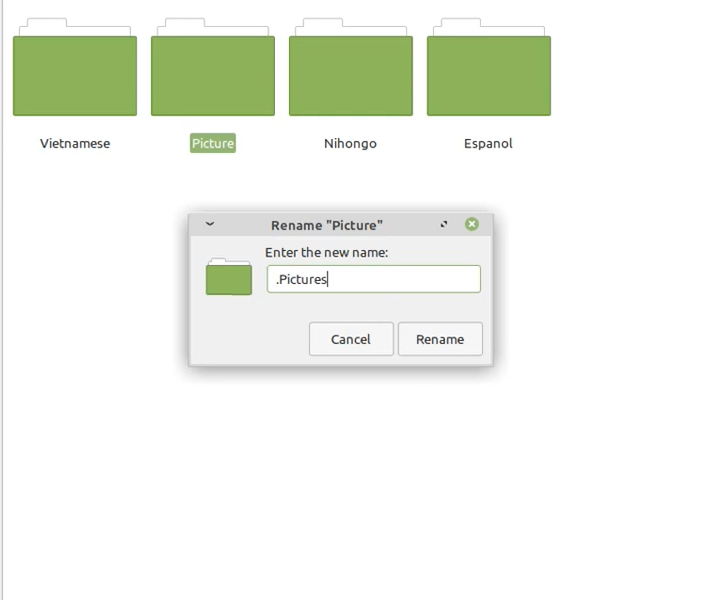
Renaming the file by clicking ‘Rename’ and adding .(dot) at the beginning of the new file name will hide the file.
View Hidden Files in Linux
Hidden files can be viewed in two best ways in Linux:
- Method 1: Command Line
- Method 2: File Manager Toolbar
Method 1: Command line:
Execute the below command to view all the hidden files in the terminal itself.
$ ls -a

This command will show every hidden record (whose names start with a . (dot) image) in your ongoing Terminal catalog.
Method 2: File Manager Toolbar
To display hidden records in Linux File manager, click the three even bars symbol at the upper right corner of the File Manager. Thusly, a drop-down menu will appear. From that point, check the Show Hidden Files check box. As a result, hidden records can be viewed in the File Explorer
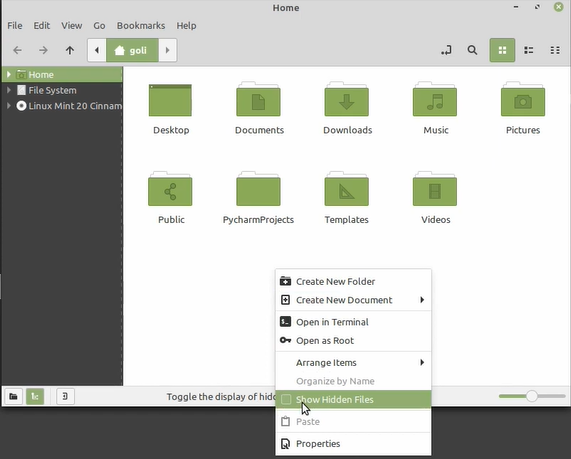
This will show every hidden record (whose names start with a . (dot) image) in your ongoing Terminal catalog.
Keyboard shortcut (GUI):
Ctrl + H is a keyboard shortcut used to show hidden files.
Unhiding files:
To unhide files in Linux, you basically have to remove a spot (.) toward the start of the filename.
We can unhide by 2 different methods:
- Method 1: Command-line
- Method 2: File Manager toolbar (GUI)
Method 1: Command-line
Execute the below command to unhide the hidden file.
$ mv .FF-test Firefox-Folder

Method 2: File Manager toolbar (GUI)
To unhide hidden records in Linux File manager, click the three even bars symbol at the upper right corner of the File Manager. Thusly, a drop-down menu will appear. From that point, check the Show Hidden Files check box. As a result, hidden records can be viewed in the File Explorer. Then renaming the hidden file by removing . (dot) at the beginning of the file, the name will unhide the file.

Click on the Rename option.

After renaming the file by removing . (dot) in front of the file will make the file unhidden.
Keyboard shortcut (GUI):
Ctrl + H keyboard shortcut is used to show hidden files. After hidden files are shown renaming the file by removing . (dot) in front of it make the file from hidden to normal. That’s how GUI way used to unhide a file.
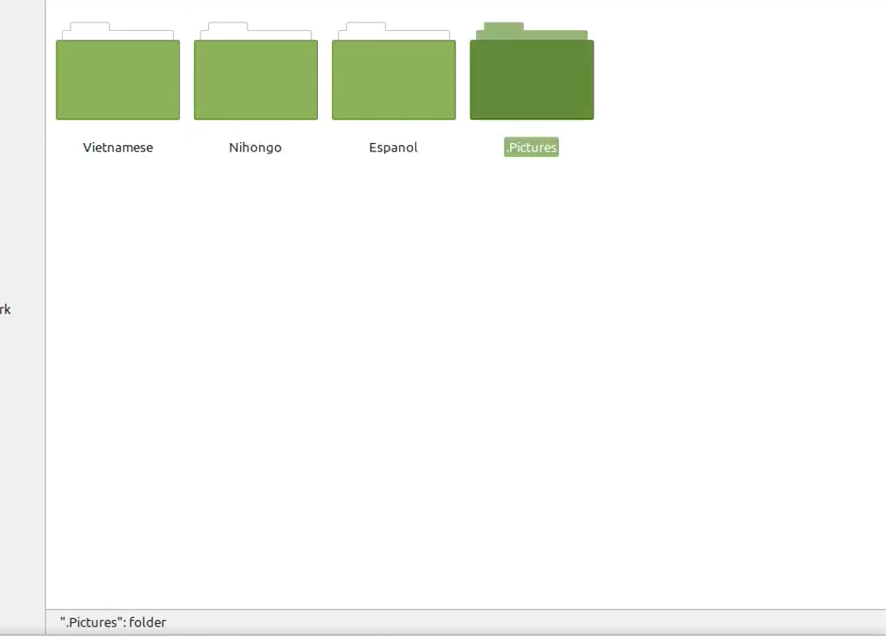
After renaming the file removing .(dot) in front of the file will make the file unhidden.

Hiding via Keyboard shortcut (GUI)
To hide unhidden files in Linux Ctrl + H keyboard shortcut is used.
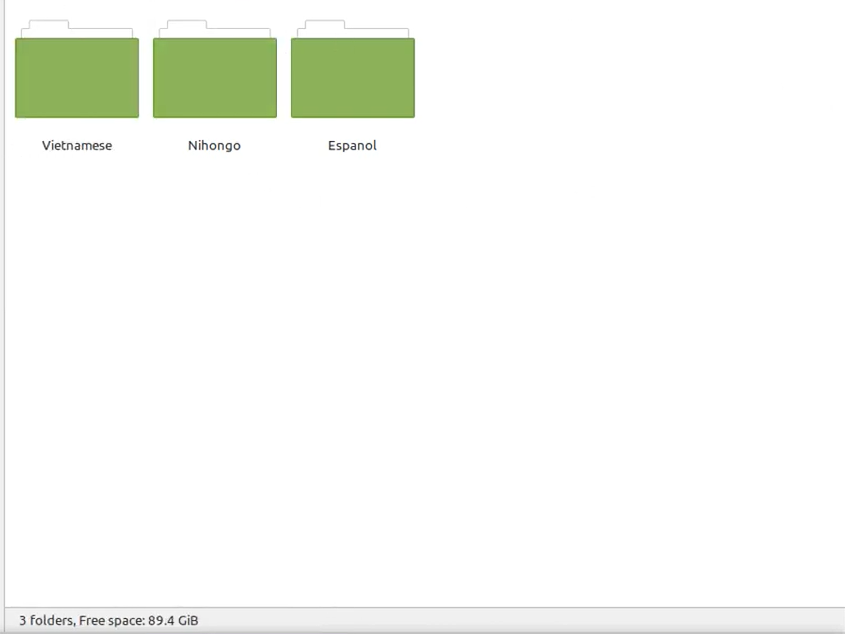
Recommend
About Joyk
Aggregate valuable and interesting links.
Joyk means Joy of geeK